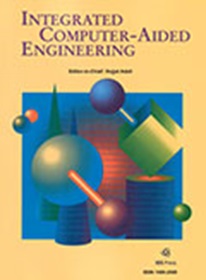A smarthome conversational agent performing implicit demand-response application planning
IF 5.3
2区 计算机科学
Q1 COMPUTER SCIENCE, ARTIFICIAL INTELLIGENCE
引用次数: 3
Abstract
In recent years, the growing use of Intelligent Personal Agents in different human activities and in various domains led the corresponding research to focus on the design and development of agents that are not limited to interaction with humans and execution of simple tasks. The latest research efforts have introduced Intelligent Personal Agents that utilize Natural Language Understanding (NLU) modules and Machine Learning (ML) techniques in order to have complex dialogues with humans, execute complex plans of actions and effectively control smart devices. To this aim, this article introduces the second generation of the CERTH Intelligent Personal Agent (CIPA) which is based on the RASA framework and utilizes two machine learning models for NLU and dialogue flow classification. CIPA-Generation B provides a dialogue-story generator that is based on the idea of adjacency pairs and multiple intents, that are classifying complex sentences consisting of two users’ intents into two automatic operations. More importantly, the agent can form a plan of actions for implicit Demand-Response and execute it, based on the user’s request and by utilizing AI Planning methods. The introduced CIPA-Generation B has been deployed and tested in a real-world scenario at Centre’s of Research & Technology Hellas (CERTH) nZEB SmartHome in two different domains, energy and health, for multiple intent recognition and dialogue handling. Furthermore, in the energy domain, a scenario that demonstrates how the agent solves an implicit Demand-Response problem has been applied and evaluated. An experimental study with 36 participants further illustrates the usefulness and acceptance of the developed conversational agent-based system.执行隐式需求-响应应用程序规划的智能家居会话代理
近年来,智能个人代理越来越多地应用于不同的人类活动和各个领域,导致相应的研究将重点放在设计和开发不局限于与人类交互和执行简单任务的代理上。最新的研究成果介绍了利用自然语言理解(NLU)模块和机器学习(ML)技术的智能个人代理,以便与人类进行复杂的对话,执行复杂的行动计划并有效地控制智能设备。为此,本文介绍了第二代CERTH智能个人代理(CIPA),它基于RASA框架,利用两种机器学习模型进行NLU和对话流分类。CIPA-Generation B提供了一个基于邻接对和多意图思想的对话-故事生成器,它将由两个用户意图组成的复杂句子分类为两个自动操作。更重要的是,agent可以根据用户的请求,利用AI Planning方法,对隐含的Demand-Response形成行动计划并执行。引入的CIPA-Generation B已经在Hellas研究与技术中心(CERTH) nZEB智能家居的两个不同领域(能源和健康)的真实场景中进行了部署和测试,用于多意图识别和对话处理。此外,在能量领域,一个演示智能体如何解决隐式需求-响应问题的场景已经被应用和评估。一项有36名参与者的实验研究进一步说明了开发的基于会话代理的系统的有效性和可接受性。
本文章由计算机程序翻译,如有差异,请以英文原文为准。
求助全文
约1分钟内获得全文
求助全文
来源期刊

Integrated Computer-Aided Engineering
工程技术-工程:综合
CiteScore
9.90
自引率
21.50%
发文量
21
审稿时长
>12 weeks
期刊介绍:
Integrated Computer-Aided Engineering (ICAE) was founded in 1993. "Based on the premise that interdisciplinary thinking and synergistic collaboration of disciplines can solve complex problems, open new frontiers, and lead to true innovations and breakthroughs, the cornerstone of industrial competitiveness and advancement of the society" as noted in the inaugural issue of the journal.
The focus of ICAE is the integration of leading edge and emerging computer and information technologies for innovative solution of engineering problems. The journal fosters interdisciplinary research and presents a unique forum for innovative computer-aided engineering. It also publishes novel industrial applications of CAE, thus helping to bring new computational paradigms from research labs and classrooms to reality. Areas covered by the journal include (but are not limited to) artificial intelligence, advanced signal processing, biologically inspired computing, cognitive modeling, concurrent engineering, database management, distributed computing, evolutionary computing, fuzzy logic, genetic algorithms, geometric modeling, intelligent and adaptive systems, internet-based technologies, knowledge discovery and engineering, machine learning, mechatronics, mobile computing, multimedia technologies, networking, neural network computing, object-oriented systems, optimization and search, parallel processing, robotics virtual reality, and visualization techniques.
 求助内容:
求助内容: 应助结果提醒方式:
应助结果提醒方式:


